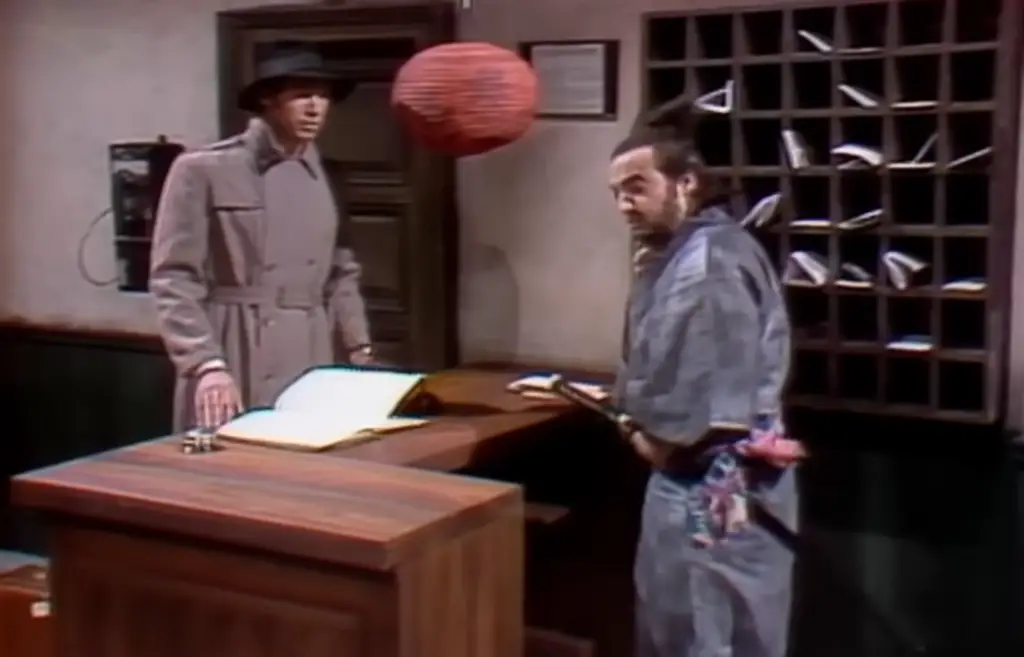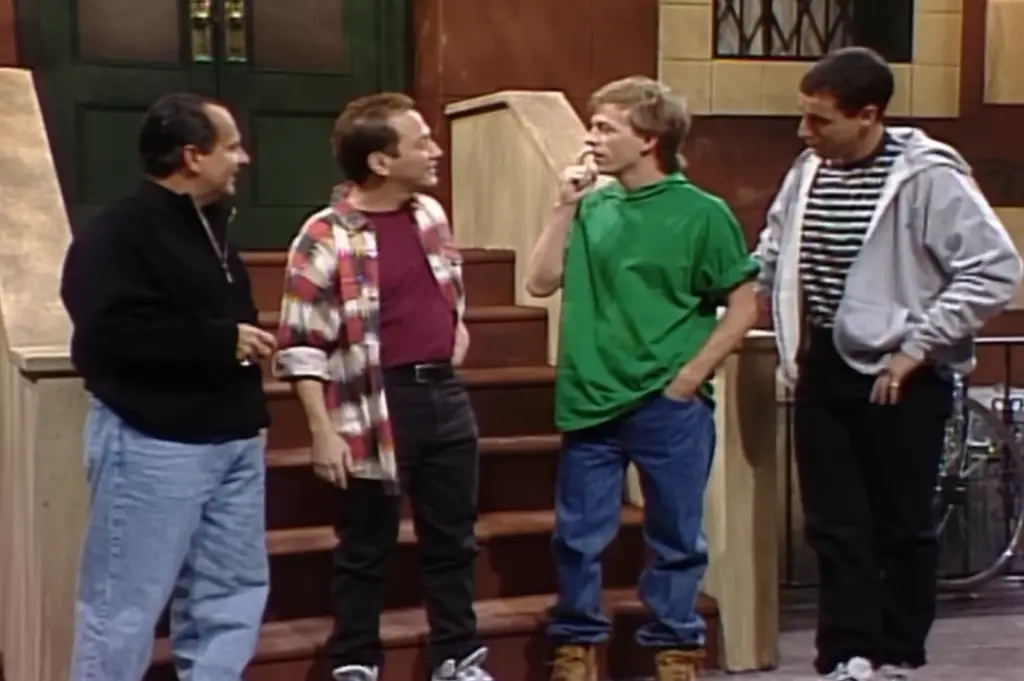The early days of Saturday Night Live were a wild frontier of comedy, where edgy humor and boundary-pushing skits were the norm. Cast members like John Belushi, Chevy Chase, and Gilda Radner thrived on irreverence, often walking the tightrope of what was socially acceptable. While these skits got big laughs at the time, many would raise eyebrows—or outright outrage—if they aired today. Changing societal norms and sensitivities have shifted the comedy landscape, making these skits fascinating relics of their era.
1. “Word Association”

Chevy Chase and Richard Pryor’s iconic skit featured a tense job interview that escalated into a racially charged exchange of words. While it aimed to address racism in a bold way, the language and themes would be deemed far too provocative for modern audiences.
2. “Samurai Futaba”

John Belushi’s recurring character, Samurai Futaba, was a fan favorite, often appearing in absurd situations while wielding a katana and speaking in gibberish. While it was undeniably funny in its day, it leaned heavily on stereotypes about Japanese culture that wouldn’t fly in today’s more culturally sensitive climate.
3. “Uncle Roy”

Buck Henry’s creepy babysitter character, Uncle Roy, was played for laughs despite the unsettling premise of his inappropriate behavior around kids. This skit was shocking even for its time, but today it would likely spark outrage for trivializing such a serious topic.
4. “Nerds and the Bully”

Bill Murray’s character bullying nerdy Lisa Loopner (Gilda Radner) was funny in its exaggerated awkwardness, but the humor often relied on physical intimidation and outdated views of masculinity. Bullying, even in jest, is no longer a comedic goldmine in the same way.
5. “The Claudine Longet Invitational”

This darkly satirical skit mocked singer Claudine Longet’s accidental shooting of her boyfriend, skier Vladimir Sabich, by spoofing a ski competition where athletes were “accidentally” shot. The morbid humor would be considered tasteless and insensitive by today’s standards.
6. “Theodoric of York, Medieval Barber”

Steve Martin’s recurring character, a bumbling medieval barber, lampooned historical medical practices. While its humor came from absurdity, some jokes about illness and crude remedies could be seen as insensitive, especially in light of today’s medical challenges.
7. “The Widettes”

This skit revolved around a family with exaggerated physical traits, specifically oversized backsides. While it was meant to be silly and absurd, modern audiences might find the body-shaming humor off-putting and mean-spirited.
8. “Dangerous But Inept: Squeaky Fromme Edition”

In a darkly comedic take on historical events, Laraine Newman played Squeaky Fromme as part of a bumbling team of criminals, including Chevy Chase and Dan Aykroyd. The skit parodied the infamous attempt by Fromme, a member of the Manson Family, to assassinate President Gerald Ford. Newman’s portrayal, combined with the group’s chaotic ineptitude, turned a grim piece of history into absurd humor. While the sketch drew laughs at the time for its audacious irreverence, today’s audiences would likely balk at mining such a sensitive event for comedy. It stands as a bold—if controversial—example of SNL’s no-holds-barred approach to satire in its early days.
9. “Cheeburger Cheeburger”

The famous Olympia Café skit featuring John Belushi as a Greek diner owner yelling “Cheeburger! Cheeburger!” was hilarious but relied heavily on ethnic stereotypes. While still beloved, such humor would face scrutiny for perpetuating caricatures of immigrant cultures.
10. “Weekend Update with Roseanne Roseannadanna”

Gilda Radner’s absurd and crude commentaries as Roseanne Roseannadanna were iconic, but some of the jokes, especially those involving bodily functions or insensitivity toward real people, might not pass today’s stricter broadcast standards.
11. “Emily Litella”

Radner’s character Emily Litella, an elderly woman who misunderstood current events, was often hilarious but occasionally relied on ageist humor. Modern sensitivity around age-related stereotypes might make her less palatable for today’s audiences.
12. “Quien Es Mas Macho?”

This spoof of a Spanish-language game show leaned on over-the-top accents and cultural stereotypes for laughs. While intended as a parody, its humor could be seen as offensive to Latino communities by modern viewers.
These skits serve as a time capsule of comedy’s evolution. What was considered boundary-pushing or bold in the 70s and 80s often relied on cultural norms that have since shifted. While they remain iconic, they remind us how much comedy reflects—and adapts to—the values of its audience.


